Zvezda
1/72 scale kits of the Mil Mi-24 helicopter (NATO codename "Hind")

At the end of the 1960s the Soviet Mil helicopter development buro of Mikhail Mil developed the Mi-24 as a large attack attack helicopter that also could carry some troops. It got 2 Klimov / Isotov turboshaft engines of a bout 2,225 shp driving a large rotor and tail rotor. The cockpit had positions for the gunner with a pilot in the back. Note that the Mi-24 is rather "a-symmetrical" especially when viewed from the front to cope with heavy rotor downwash and side slip effects.
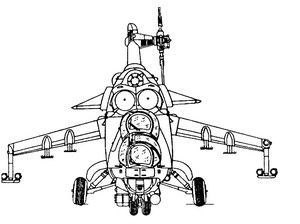
The forward fuselage sits tilted as compared to the main fuselage, the rotor sits tilted as well as the stub wings and tail rotor. The Mi-24 has also a cabin for up to 8 troops situated below the main rotor. Cruise speed is about 300 km/hr.
Main versions are:
First Mi-24's "Hind A" had a single large canopy and was mainly an armed 8 troop transport.
Later the single canopy became the two bubble hoods type, first featured on the...
"Hind D" appearing from 1976 was armoured gunship with 12.7 mm cannon and AT-2 anti-tank missiles.
The Mi-24V "Hind E" appeared from 1980 and could be fitted with AT-6 and even AA-8 air-to-air missiles for self defence. (Mi-35 is the export version).
The Mi-24 VP could be fitted with advanced "Shturm V" anti-tank missiles.
The Mi-24 P "Hind F" has a large twin barrel 30 mm GSh-30K canon installed on the right side (Mi-35P export). The cabin is mainly used for extra armament stores. The stubwings are a bit shorter in span and the undercarriage fixed and non-retractable.
Over 2,500 Mi-24 helicopters were manufactured and the type was sold to dozens of foreign air forces and used in many wars.
Many years later in 2010 Zvezda from Russia released a 1/72 kit #7293 of the Mi-24 V/VP "Hind E". (the kit also appeared in 2013 in a Revell box as kit #04839).
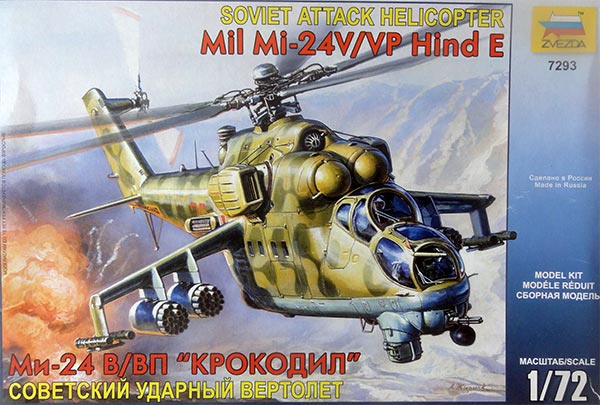
There are 5 sprues in grey plastic and 1 clear soft plastic sprue containing many parts.
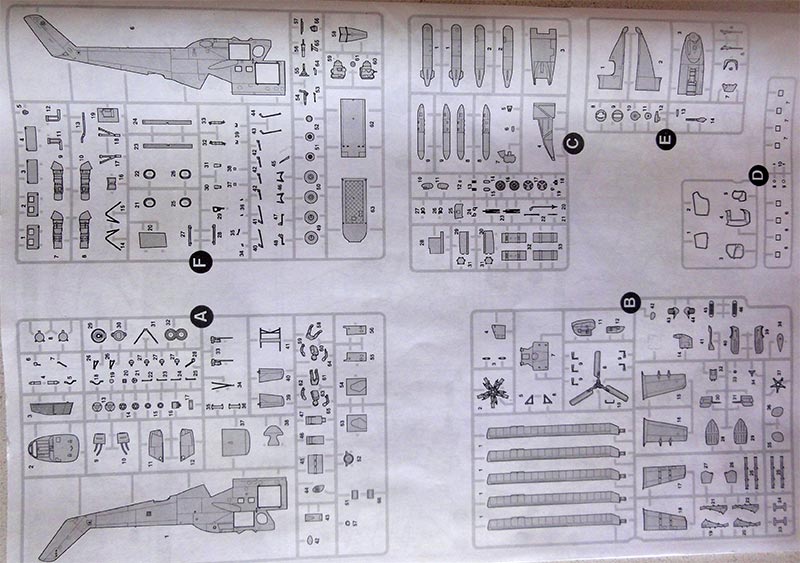
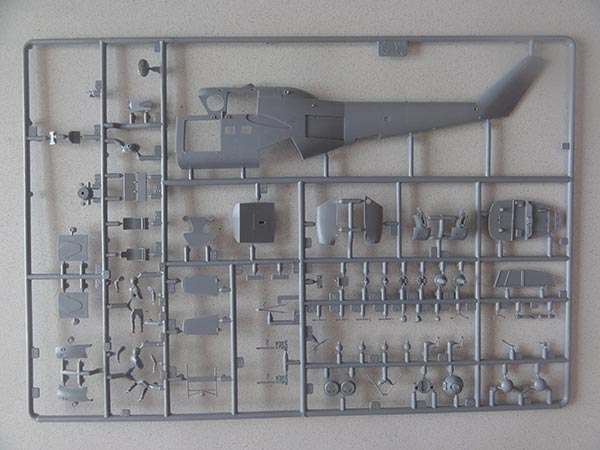
You also get 2 crew figures with posable arms.

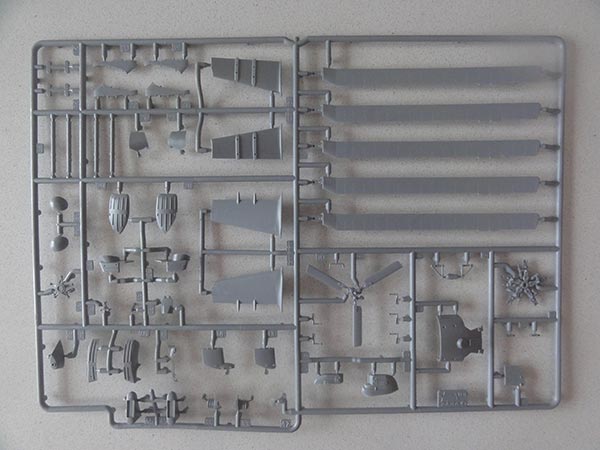
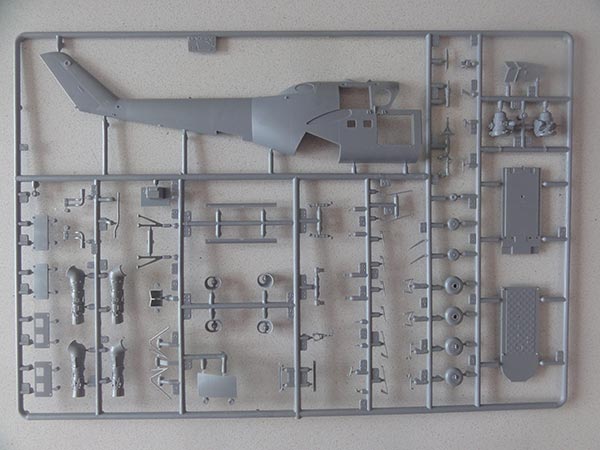
The clear parts are of the typical soft clear Zvezda plastic. The crew hatches can be set open.
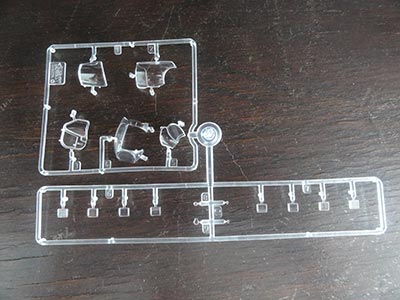
The instructions are fine but rather complex to follow with more than 35 steps with various sub-assemblies. You get detailed engines and open hatches. This makes along with some bigger fit issues the kit buildable for modellers with only experience. If you want to close up the panels, a lot of effort is required.
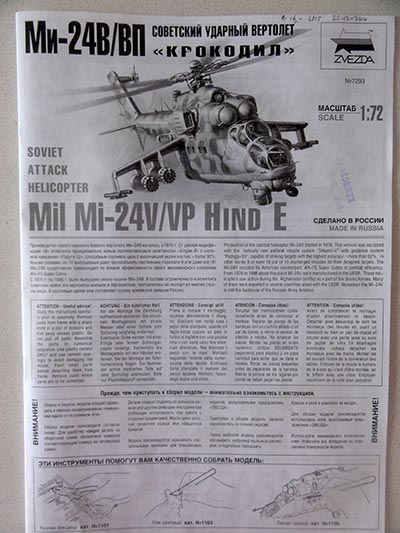
The decals are for 3 schemes: A Soviet Mi-24V used in 1982 in Afghanistan by the Soviets,another one in 1988 and a Mi-24VP of the Baltic Fleet in 2001. All have camouflage schemes. Colours are indicated also for the detail but only in Modelmaster and Zvezda paints.
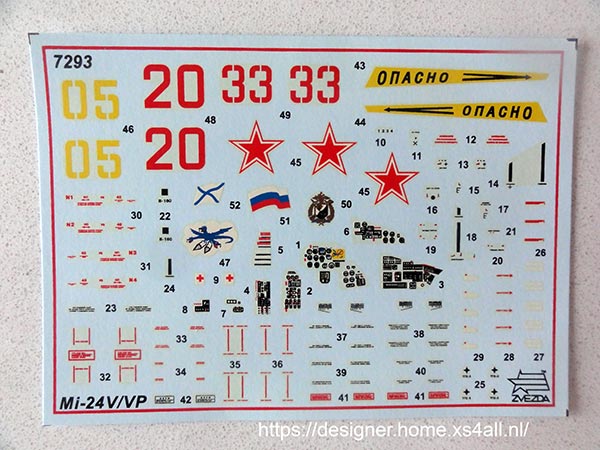
(Note: Zvezda also released other Mi-24 kits for different versions like the Mi-35 with some different sprues).

ASSEMBLY
The small parts have fine detail, remove these with a fine modelling cutter and clean up before assembling that part.
I had been warned about fit issues. The main fit issue is that the main interior parts are too wide; when not tackled the fuselage simply will not "close". It seems that Zvezda "forgot" to compensate their 3D CAD design for the plastic material fuselage thickness.
So do the following:
- remove on both sides of floor part #F62 2 x 0,5 mm;
- remove on both sides of roof part #F63 2 x 0,5 mm;
- remove from the wall parts #C29 + C36 also some 0,5 mm from their outsides;
- remove 2 x 0,5 mm from sides bulkhead #A2;
- remove 2 x 0,2 mm from the wheelbays #A37;
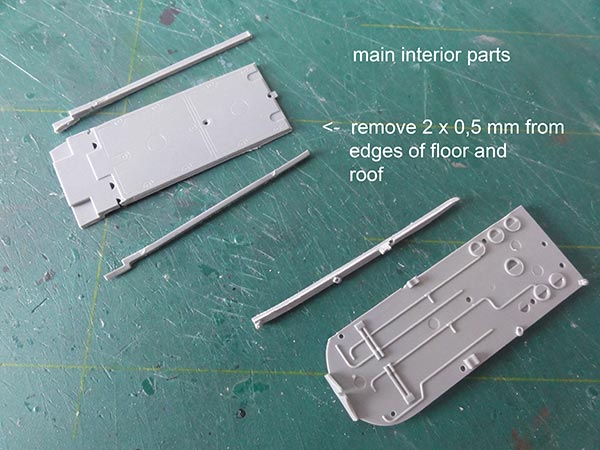
With these tackled up front before starting assembly, the kit assembly is far better.
It is noted that the model once assembled is "a-symmetrical" looking from the front just like the real helicopter.
I also pre-painted smaller parts with the airbrush while still in their sprues. Prepare the various fuselage shells for the required holes to be drilled open depending on the version desired with a fine drill as indicated in the Zvezda instructions.
This particular model will be made in the "version I" for an African RWANDA Mi-24V helicopter. It was also decided to set the many hatches and doors open as per kit. (When these are desired to be set closed, they do not really fit good).
The cabin got grey side walls and roof and darker grey floor. Assembly the smaller interior parts on the trimmed floor as desired and add some inside details on the split cabin doors.
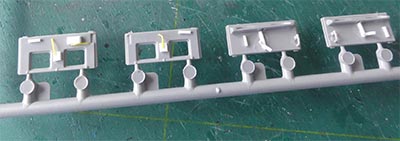
At the central section, already some brown camouflage paint was airbrushed to ease masking.
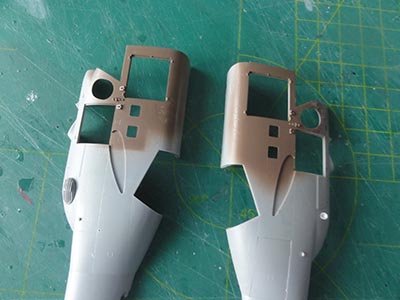
The cabin door windows were fixed with Micro Kristal Kleer after the doors had been painted. The windows were masked off with tape.
Closing up the main fuselage can only be done after trimming of parts as listed above. I also added a strip at the lower edge for more strength.
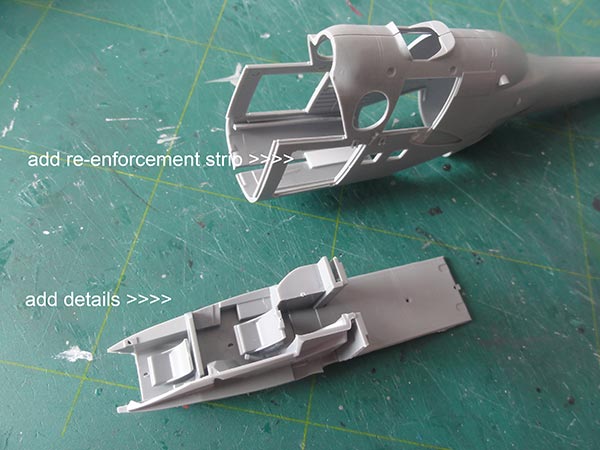
In the cockpit were added foot pedal controls. For the cockpit interior decals are provided. Painting was done. The cockpit panels and side walls were painted blue with a green hue and the cockpit floors black. The decals were used for the instruments and a few bits added. (tip: there is an EDUARD aftermarket set SS368 that provides coloured etch metal instrument panels).
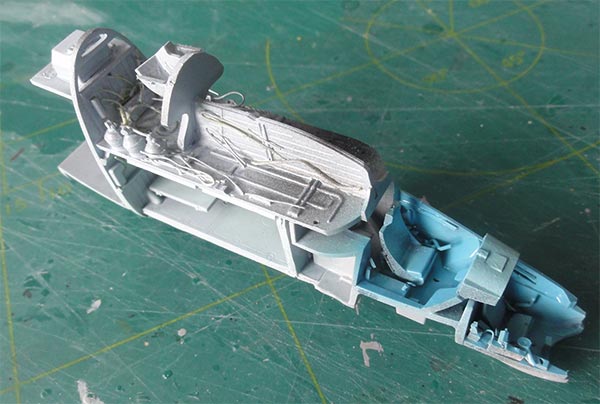
Before closing up (as shown in STEP 16) the forward cockpit/ fuselage section I added some nose weight below the floor.
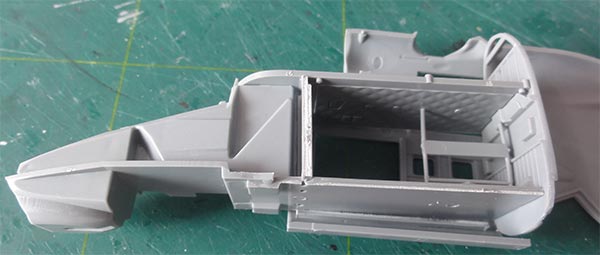
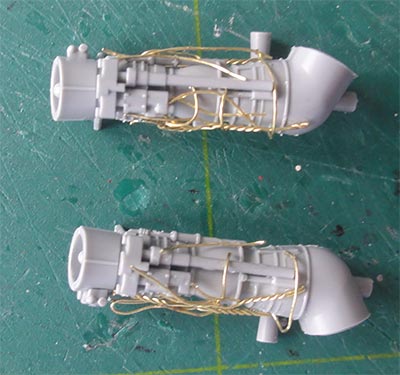
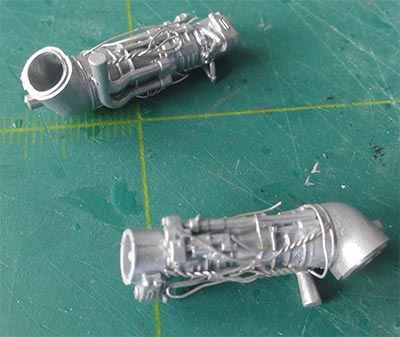
The engines got extra details with wires as the hatches would be set open. The engines were installed and some extra details from scrap.
I joined each forward side with the rear in stead of setting the whole forward section.
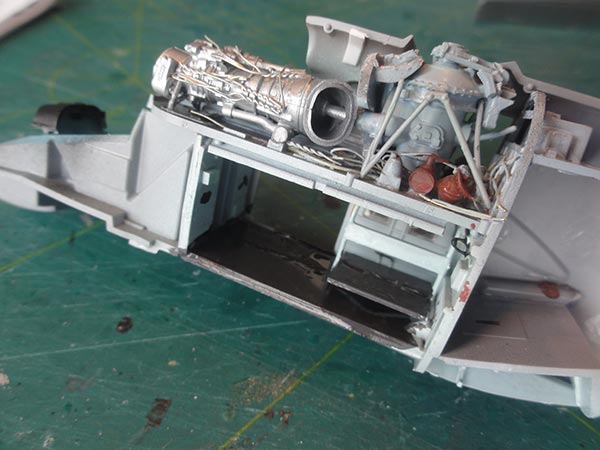
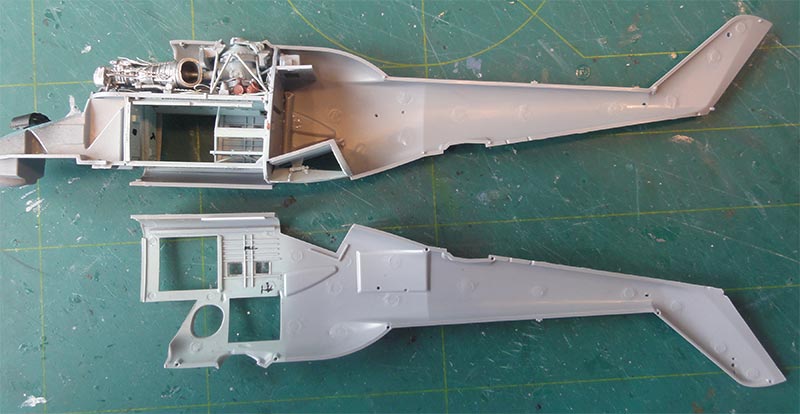
Joining the two fuselage sections needed sanding and putty and sanding.
The crew figures were not installed, so some seat straps were added on the seats made from painted tape.
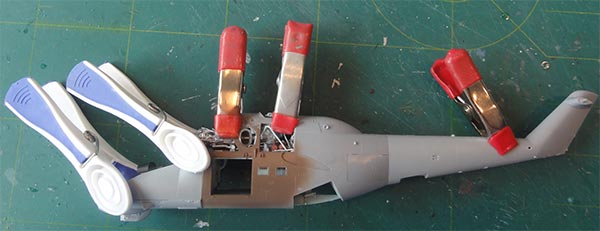
The closed up fuselage needed sanding the joints and putty in a few spots.
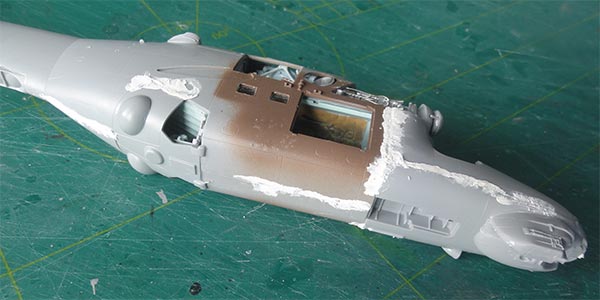
 Still a piece of plastic strip was needed at the top fairing to close the gap.
Still a piece of plastic strip was needed at the top fairing to close the gap.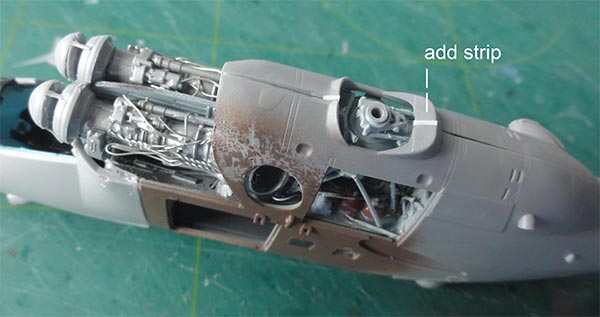
Note: the rear horizontal stabilizers were set after airbrushing the camouflage scheme. Same for the smaller bits. The stub-wings were set in place.
For the African RWANDA armed forces Mi-24V scheme I had after market decals of Casper, set #72030.
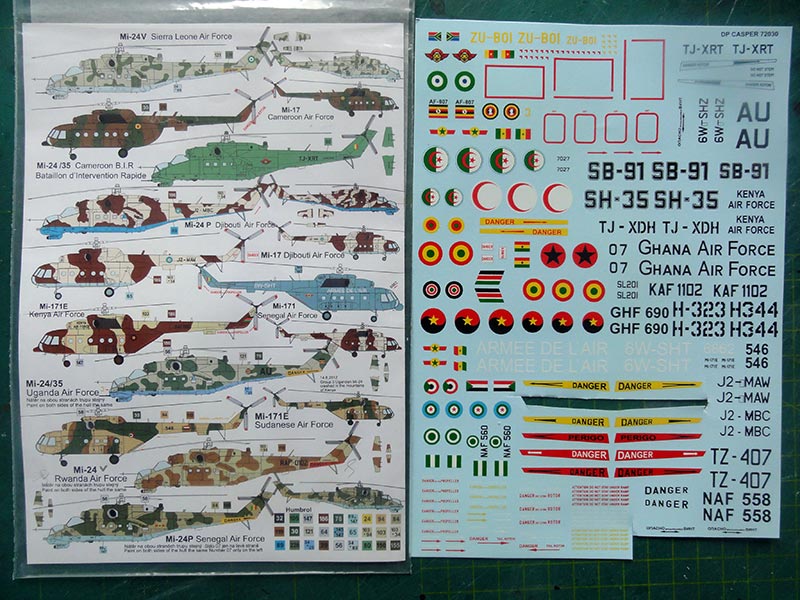
The colours airbrushed with a wrap around brown-sand pattern using Revell Aqua acrylic 16 sand and 381 braun.
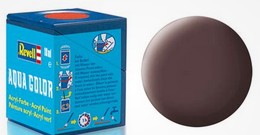
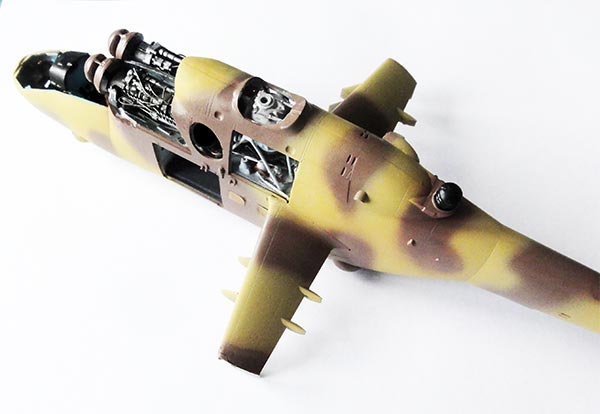
Next, the details were added.
The large exhausts (of Version I #F21 + F22) were set on from the outside and needed white glue to close any gaps. (you also get protective engine exhaust covers but these were not used for the RWANDA model).
In STEP 21 I found that the instrument covers need trimming to avoid interference with the transparant cockpit hoods. White glue was used to get the hoods installed.
The rotor blades got a medium grey colour and a metal leading edge, airbrushed after masking. The tail rotor as well but with red tips. The main rotor is nicely detailed as per kit but got some additional wires.
The main undercarriage instructions are a bit unclear how to fit the legs. The main wheels should sit at about 85 degrees. The rocket launchers were painted a mix of olive green and metal.
The few RWANDA markings from the Casper decal set were added and the red tail tri-angle got some extra red painted.
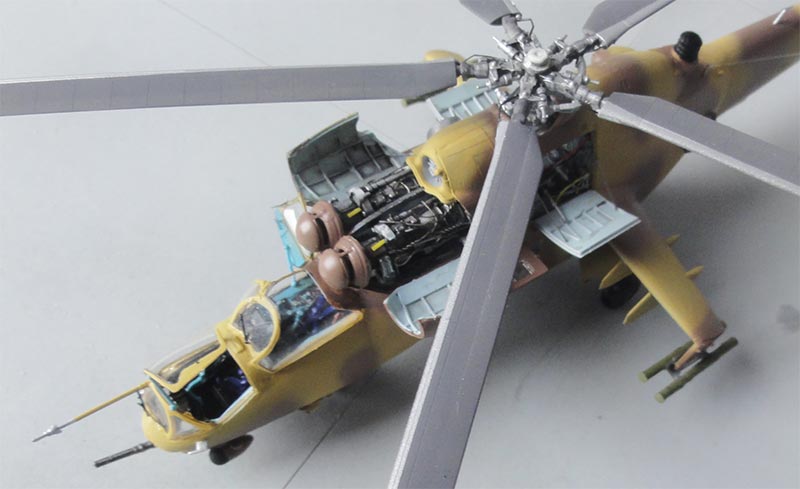
The various hatches were added and set open. Some additional holding rods were added made from thin metal wires.
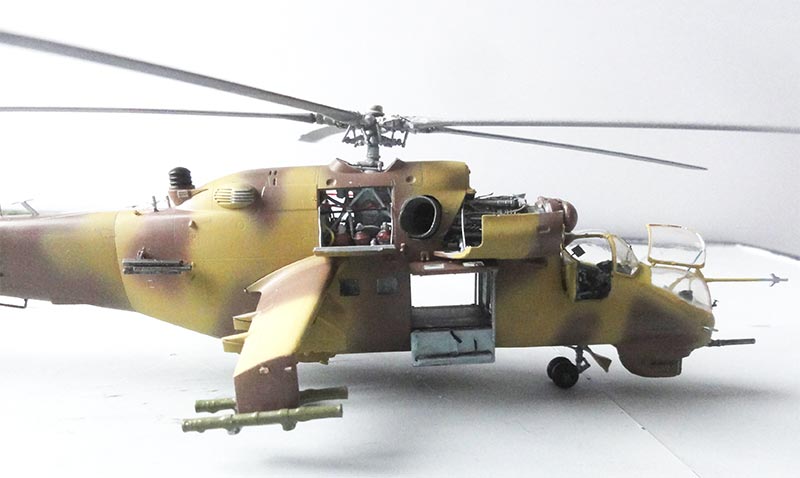
Finally, long antenna wires and a pair of tiny windscreen wipers were added at the 2 windshields made from thin black sprue and set with white glue.
..
RWANDA
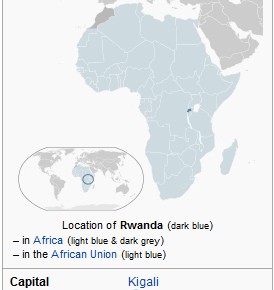

 < old flag
< old flag

[ area: 26,338 sq.km | population: 12,5 million | capital: Kigali | GDP 900 USD per capita nominal ]
Rwanda is a land locked African country and was a German colony (as Ruanda-Urundi) from 1884 to 1916 when the Belgians in Congo took over. Rwanda became independent July 1962 (and Burundi). In the 1990s there was a terrible civil war between Hutu and Tutsi that lasted until 1994. It is the most densily African country with nearly 13 million people living on 26,338 sq.km of many hills and is a poor country.
In the 1960s 3 ex-French 3 Fouga Magister jets were flown with support from Belgium as well as a BN Islander. A Dornier Do-27 was used with later on a few Alouette III helicopters, C-47 and Noratlas transports. Gazelle SA342L helicopters also were acquired but some 20 Mil Mi-17 helicopters were the main type. The air force is now part of the "Forces Rwandaises de Défense". Current types are a pair of Diamond DA42 Twin Stars and Cessna caravans along with 5 Mi-25 Hinds and remaining 12 Mi-17 helicopters. A Gulfstream G550 is the VIP jet. The only base is at Kigali.
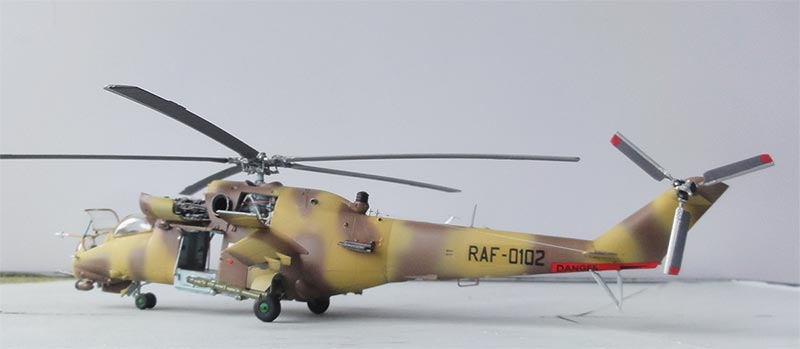
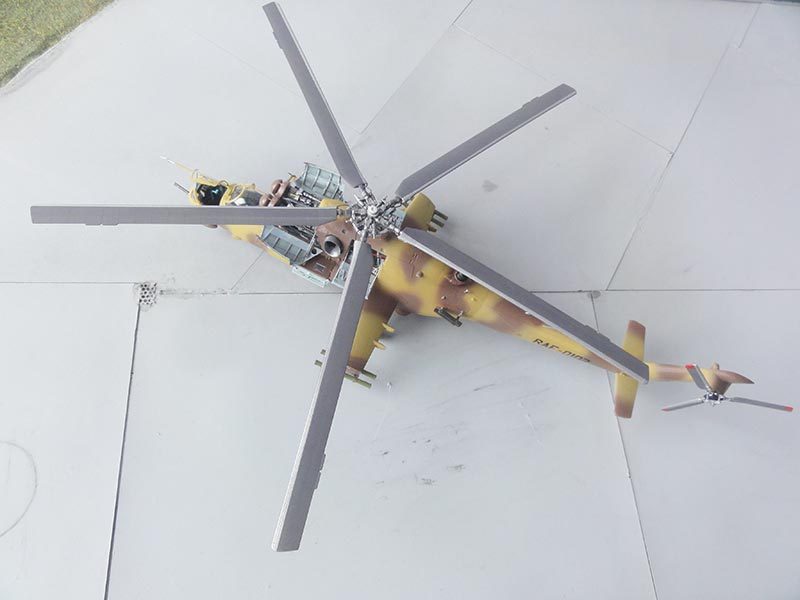
Mi-24V, Rwanda, "RAF-0102", delivered 1997 and still flying in 2019
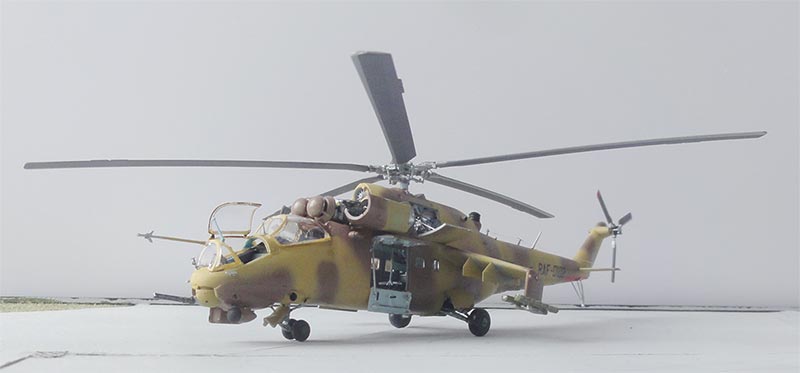
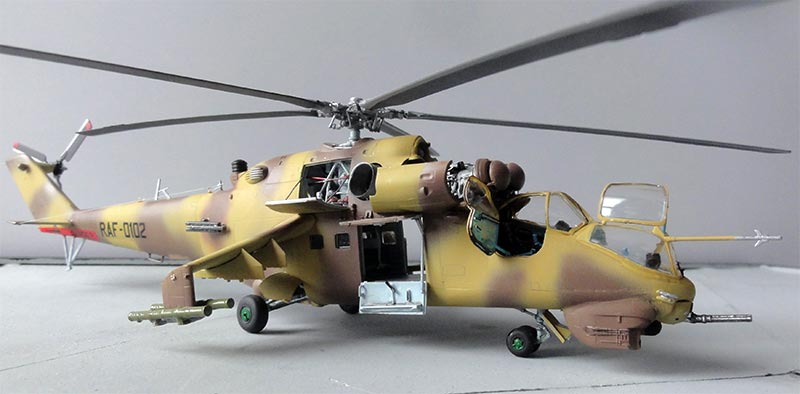
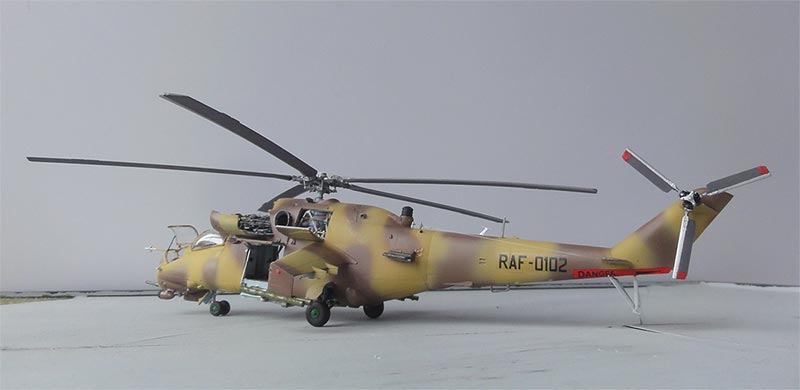
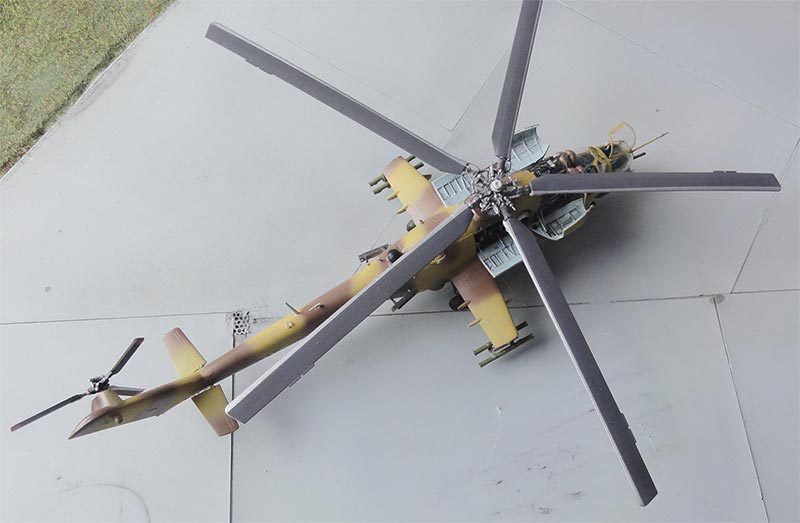
... at Kigali
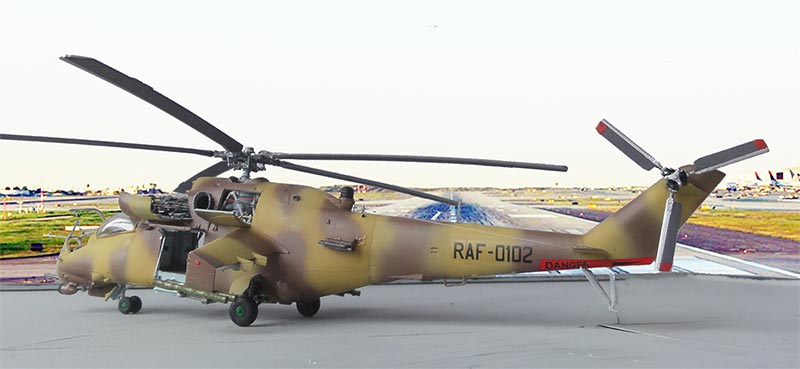
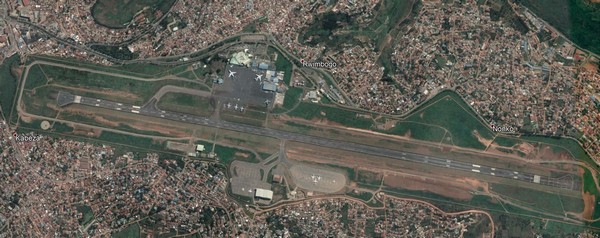
[ Google Earth view of Kigali airport with at the south the small armed forces platform with some Mi-24 Hinds ].
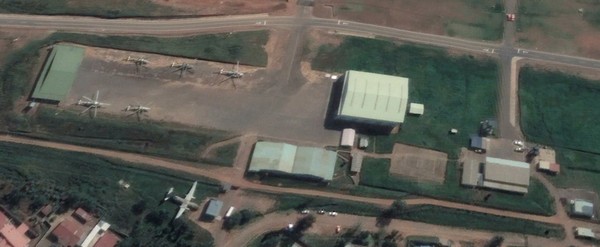
... and at Kamembe
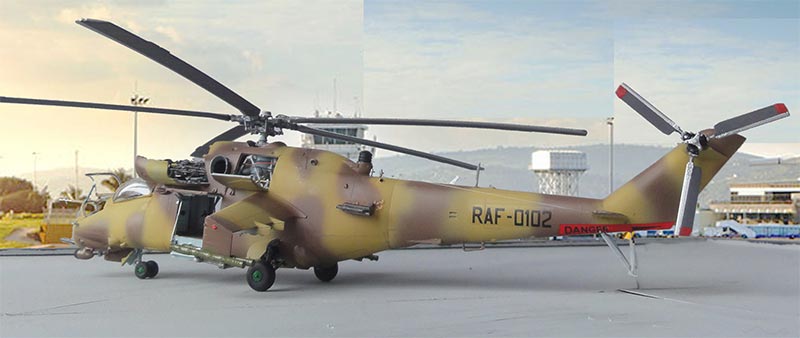
REFERENCES:
- Mi-24, 4+ publications, Czech
- Mi-24 in detail, lock-on, Verlinden
- Mi-24, WWP publications, Volume 4
- Mi-24 in Action, Squadron Signal publications
- Air International magazine, Volume 26, pages 231-235
- World Air Power journal, Volume 18, Mi-24 article
- World Air Power journal, Volume 37, Mi-24 special, pages 45-50-75 ;
- IPMS Nederland, MIP 2021-5 (article written by me)
Back to 1/72 Models.......
(c) Copyright Meindert "designer"/ All rights reserved. Your comments are welcomed by webmaster
Created this page
Dec 13, 2021